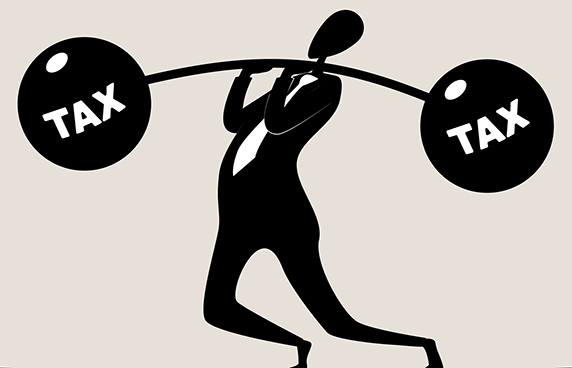Connecticut Property Taxes Third Highest in U.S.

Connecticut has the third highest per capita property taxes in the nation, according to a new report released this week.
The Connecticut Conference of Municipalities report puts the state’s per capita property tax burden at $2,847—twice the national average of $1,518.
Local property taxes are the highest taxes Connecticut businesses pay and represent 72% of city and town revenues.
CCM says of the 122 cities and towns with no revaluations in fiscal 2019, 79 raised property taxes for the 2020 fiscal year, with 59 increasing rates above the state’s 1.6% inflation rate.
Connecticut-FY-2020-Property-Tax-RatesRates remained unchanged in 30 localities while 13 cut property taxes.
Derby’s property taxes increased 6.35%, the highest percentage jump of any locality. Middlefield saw the biggest decline at 5.86%.
Among the 47 cities and towns with 2019 revaluations, 21 raised mill rates, eight left them unchanged, and 18 cut rates.
Of those municipalities, New London saw the biggest percentage increase (14.47%), while Kent’s 10.09% cut was the largest decline.
Property Tax Rates: Top 10
| Loan Options | New Loans | Priority Loans | Expanded Loans |
|---|---|---|---|
| Term | 4 years | 4 years | 4 years |
| Minimum loan size | $500,000 | $500,000 | $10 million |
| Maximum loan size | Lesser of $25 million or 4x 2019 adjusted EBITDA | Lesser of $25 million or 6x 2019 adjusted EBITDA | Lesser of $200 million, 35% of outstanding and undrawn available debt, or 6x 2019 adjusted EBITDA |
| Risk retention | 5% | 15% | 5% |
| Payment (year one deferred for all) | Years 2-4: 33.33% each year | Years 2-4: 15%, 15%, 70% | Years 2-4: 15%, 15%, 70% |
| Rate | LIBOR +3% | LIBOR +3% | LIBOR +3% |
Source: Connecticut Conference of Municipalities.
‘Unsustainable’
Statewide, property taxes now total over $11 billion annually, which CCM says represents an increase of at least $500 million since fiscal 2017.
At 74.29 mills —unchanged from fiscal 2019—Hartford has the highest mill rate of any Connecticut municipality. Salisbury, which raised taxes 2.65% this year, has the lowest mill rate (11.6).
CCM executive director and CEO Joe DeLong said state aid represents 23.4% of Connecticut municipal revenues, well below the national average of 32.9%.
“Relying on the property tax to continue to fund local government is unsustainable.”
CCM’s Joe DeLong
“The need for adequate state aid to achieve significant property tax relief—along with other diversified local revenue sources and greater authority to contain local costs—is undeniable,” DeLong said.
“Nearly 100 towns and cities were forced to increase their property tax rates because of cuts in some state aid programs, and in spite of sustained state aid in others areas for local governments.
“Some communities still have extraordinarily high property tax rates. Relying on the property tax to continue to fund local government is unsustainable.”
RELATED
EXPLORE BY CATEGORY
Stay Connected with CBIA News Digests
The latest news and information delivered directly to your inbox.


